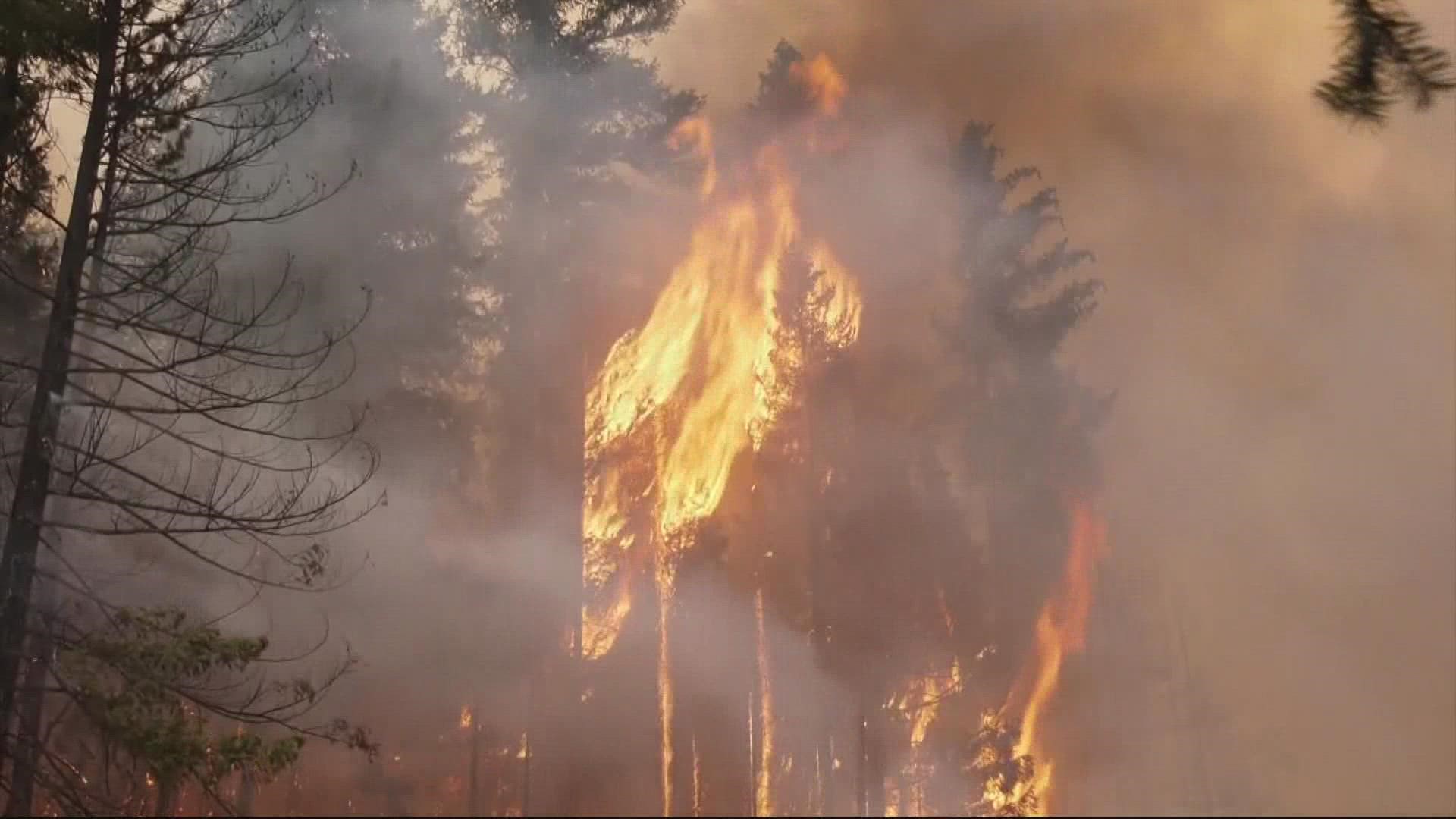PORTLAND, Oregon — Scientists forecast massive wildfires like the ones that burned in Oregon last year will only get bigger and worse. However, new research out of Oregon State University suggests thinning the forests can go along way to calming the flames.
"This study shows that fuel reduction thinning to moderate fire behavior... works." said James Johnston, a forest ecologist at Oregon State.
Johnston's research focused on a Ponderosa Pine forest in Northeast Oregon. He and his team compared thinned stands of trees with un-thinned control stands and used computer modeling to predict the behavior of future fires.
"Most fuel reduction projects in Eastern Oregon, thin from below and cut down the smaller trees and leave the old large fire resistant trees," Johnston said. "That leaves behind a forest that's less dense, and our studies show, it has a less far less fuel to burn in future fires."
Johnston said the result is even better when prescribed burning is added.
"The only way to fight fire is with more fire," he said.
While thinning alone will go a long way to reducing wildfire, Johnston's research shows prescribed burning helps get rid of a lot of the fuel the fires need.
However, Johnston said those controlled burns are not happening nearly as much as the should.
"We're seeing more and more uncontrolled wildfire, but the amount of prescribed fire, that is fires that we set to reduce surface fuels under moderate weather conditions, has remained flat for more than 20 years," he said.
Johnston said his research shows that the investment by Congress to better manager our country's forests is paying off.
However, as the climate continues to warm and the wildfire threat grows, more may need to be done to reduce the wildfire risk.

